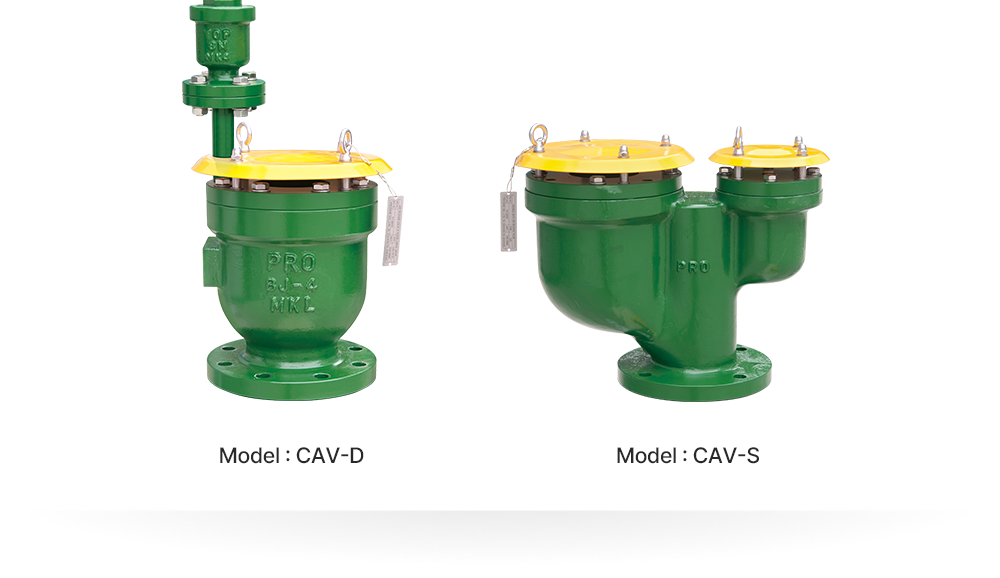
Combination Air Valves are normally installed at high points of pipelines where air would naturally is arisen ahead of the incoming liquid during filling and collect air during operation and/or where negative pressure occurs during draining. The large (air release & vacuum breaker) and the small (air release) orifices are both opened during filling, and the majority of the air passes through the large orifice. The rate of air discharge is a function of the differential pressure across the air release & vacuum breaker valve. During filling, incoming water compresses the air in the empty pipe until the pressure differential across the air valve is sufficient, so that air is discharged at the same volumetric rate as water is entering the pipe.
After all the air has been purged, liquid enters the valve, lifts the float ball and closes both orifices. While the large orifice is closed, the small orifice is reopened as necessary to release any air that collected in the valve after it has closed. In case that the internal pressure falls below atmospheric pressure, both orifices are opened to allow air to flow through the valve into the system at the same volumetric rate at which the liquid is draining thus avoiding critical vacuum and damage to the pipe.
Release of small air pockets under operation
pressure